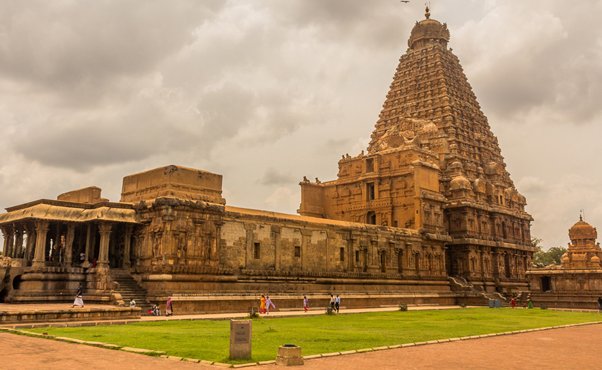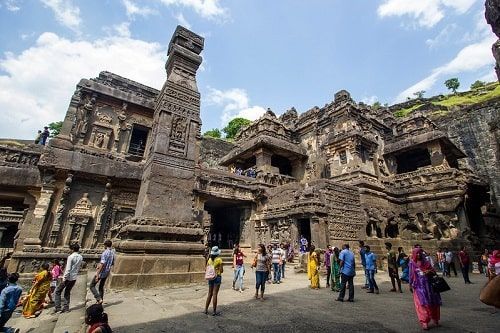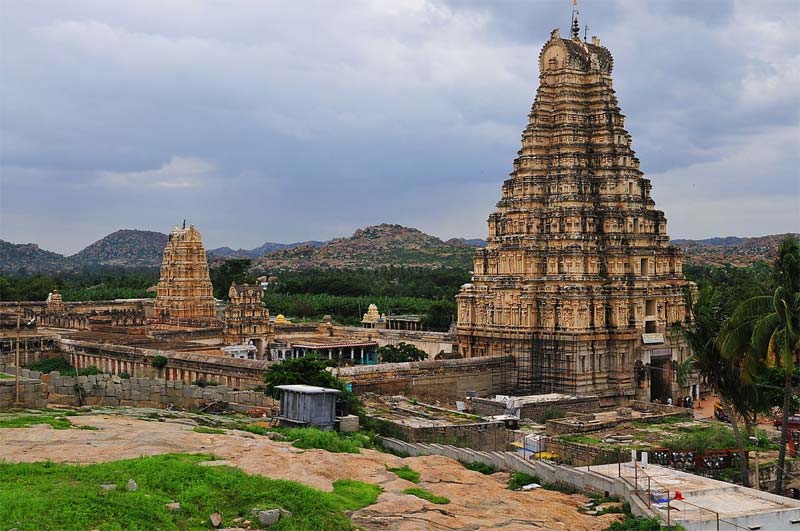Dravidian architecture or the South Indian temple style is an architectural idiom in Hindu temple architecture that emerged in the southern part of the Indian subcontinent or South India and in Sri Lanka, reaching its final form by the 16th century. It is seen in Hindu temples and distinctively at variance with north Indian styles in the use of a shorter and more pyramidal tower over the “garbhagriha” or sanctuary called a “vimana”, whereas the north has taller towers, usually bending inwards as they rise, called shikharas. However, for modern visitors to larger temples, the dominating feature is the high “gopura” or gatehouse at the edge of the compound; large temples have several, dwarfing the vimana; these are very much recent developments. There are numerous other distinct features such as the “dwarapalakas” – twin guardians at the main entrance and the inner sanctum of the temple and “goshtams” – deities carved in niches on the outer sidewalls of the sanctuary.
1. Shore Temple, Mahabalipuram
The shore temple at Mahabalipuram is one of the oldest examples of the Dravidian style of architecture. Built by the Pallavas, this temple is a UNESCO world heritage site along with the Pancharathas and other heritage structures.
2. Brihadeshvara Temple, Thanjavur

A part of the UNESCO World Heritage Site also renowned as the “Great Living Chola Temples”, the temple is another architectural marvel. The complex stands in the midst of secured walls probably added in the 16th century. The “vimana” (temple tower) is 216 ft (66 m) high and happens to be the world’s tallest. The “Kumbam” (the apex or the bulbous structure on the top) of the temple is chiseled out of a single rock and weighs around 80 tons.
3. Kaikashnath Temple, Ellora

One of India’s greatest monuments, this astonishing temple, carved from solid rock, was built by King Krishna I of the Rashtrakuta dynasty in AD 760 to represent Mt Kailasa (Kailash), Shiva’s Himalayan abode. Covering twice the area of the Parthenon in Athens and being half as high again, Kailasa is an engineering marvel that was executed straight from the head with zero margins for error.
4. Virupaksha Temple, Hampi

Virupaksha Temple is the 7th century Shiva temple in Hampi, Central Karnataka (Hampi is a UNESCO World Heritage Site). The Temple complex is surrounded by three “gopuras” (towers). The main tower, on the east, is an imposing structure, 9 stories, 50 meters tall, built in the fifteenth century.
5. Meenakshi Amman Temple, Madurai

One of the most iconic examples of the Dravidian style, the Meenakshi temple strikes an imposing view with its enormous towers and intricate architecture. Built around the 11th century by King Kulasekara Pandya of the Pandya Dynasty, the temple is the spiritual, economic and social center of the city, a must-visit for anyone wishing to witness the epitome of the Dravidian style.



















